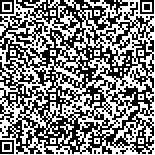下载中心
优秀审稿专家
优秀论文
相关链接
摘要

臭氧已成为中国继PM2.5之后多地的首要污染物,臭氧污染防治是中国“十四五”及未来大气污染防治的重点。本文回顾了近60年来国内外臭氧卫星观测方面的主要进展,包括卫星探测载荷和臭氧相关的反演应用技术等,分为3个阶段总结了卫星载荷天底、临边和掩星3种探测方式的发展历程。臭氧卫星遥感反演算法和监测应用也随着载荷的发展在不断更新,本文重点介绍了臭氧柱总量和垂直廓线卫星遥感反演算法、近地面臭氧及其前体物观测、平流层臭氧入侵观测和区域传输、臭氧卫星观测数据的精度验证等方面的重要进展。对比国际臭氧卫星遥感监测,中国臭氧监测卫星发展滞后,虽然国家民用空间基础设施规划中陆续发射的高光谱观测卫星、大气环境监测卫星具有初步的臭氧监测能力,但在卫星载荷在功能、性能等方面还有不小差距,比如空间分辨率、信噪比等方面。在算法反演和监测应用方面,目前臭氧柱总量反演精度较高,还存在对流层中低层和近地面臭氧浓度反演精度不够,臭氧污染评估及成因分析不足,如近地面臭氧污染迁移转化过程、平流层臭氧侵入识别分析等问题,是下一步要重点关注的方向。
Ozone is an important trace gas which absorbs UV radiation and protects life on earth from its potentially harmful effects. It is an important greenhouse gas in the troposphere. On average, approximately 90% of the atmospheric ozone is found in the stratosphere, and 10% is found in the troposphere. After the PM2.5 reduction, the increasing surface ozone concentration has become the primary concern in China, which is a significant pollution control task in the Chinese “14th Five-Year Plan.” This study reviews the substantial development of international ozone satellite observations in the past 60 years, including the satellite payloads, ozone retrieval, and monitoring application. The development of satellite can be divided into three stages with three viewing geometries (limb, occultation, and nadir), the limb and occultation observations are mainly focused on the middle and upper atmospheres, while the nadir observation can provide effective information on the troposphere, with a better horizontal resolution and the capability to derive the ozone in low middle layer of troposphere by retrieval method. The ozone retrieval methods and monitoring applications are constantly updated with the development of the satellite. This study focuses on the important progress in the satellite remote sensing retrieval algorithm for total ozone column and vertical ozone profiles, the observation of surface ozone concentration and its precursors, the observation and regional transmission of stratospheric ozone intrusion, and the validation of ozone satellite observation data. The algorithm of the total ozone column retrieval has high accuracy (up to about 90%—95%) while the ozone profile retrieval algorithm limited by satellite payloads, clouds and method, its accuracy is relatively low (up to about 70%—75%). There are some problems in the retrieval of the near surface ozone concentration by machine learning method, which has poor robustness and easy to overfitting. Satellite remote sensing combined with other data can monitor stratospheric ozone intrusion, but it is still difficult to quantify the impact of surface ozone concentration. Compared with that of the international ozone satellite remote sensing monitoring, the development of China’s ozone monitoring satellites lags behind. Although the hyperspectral observation satellites and atmospheric environment monitoring satellites to be launched in succession in the national civil space infrastructure planning have preliminary ozone monitoring capabilities, a large gap exists in the function and performance of satellite payloads, such as spatial resolution and signal-to-noise ratio. In terms of retrieval algorithm and monitoring application, the retrieval accuracy of the total amount of ozone column at present is relatively high. Retrieval accuracy of ozone concentration in the middle and lower troposphere and near surface is insufficient. Evaluation and cause analysis of ozone pollution, such as the migration and transformation process of near surface ozone pollution and the stratospheric ozone intrusion identification, are also inadequate. These are the key problems that need to be solved in the next step.

